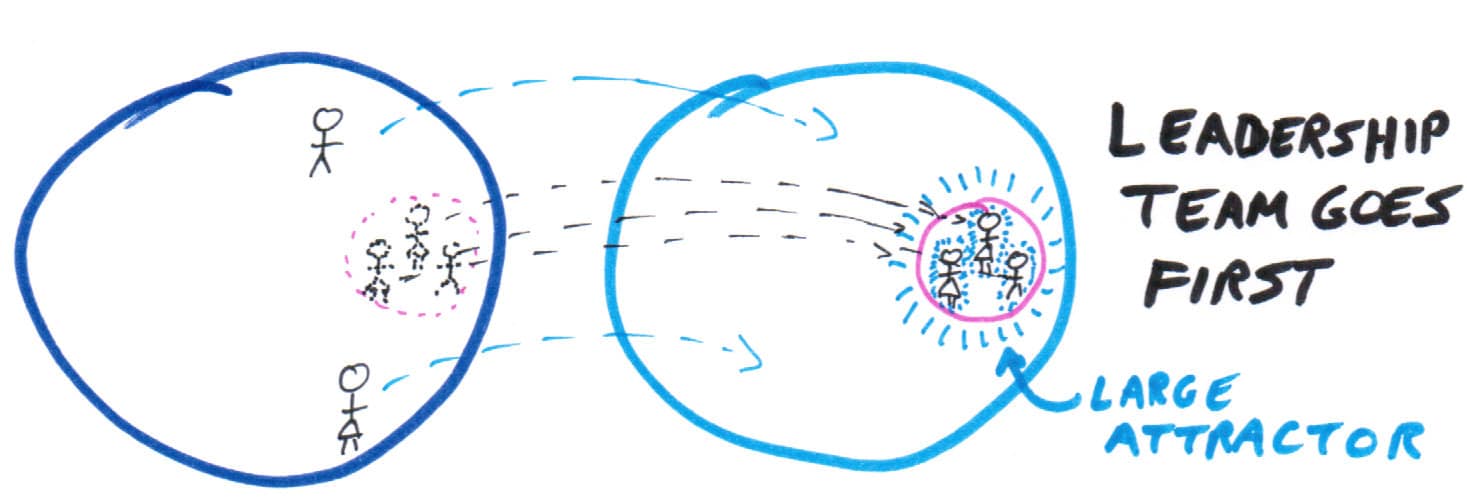Let us consider an organization that wants to transform itself. i.e. to change in structure and character.
A simple view would be as follows:

By state, I mean the complex system that represents the organization. This includes people, culture, customers, infrastructure, etc.
Transformation is in a Direction
Real transformation is about pursuit of a direction, not achievement of a goal. A living, growing systems will continue to pass through a series of many small transformations as per diagram below.

Each Person Transforms
When we talk about an organization transforming we are are really talking about the aggregate of the transformations of all the individuals. Many people need to transform before one may recognize a change in the organization as a whole. Of course people will transform at different rates as per Moore’s model for diffusion of innovation based on innovators, early adopters, etc. The diagram below illustrates each person needing to transform.

Leaders Go First and become Attractors
For a given moment of transformation, it will be the case that some people will go first. These people will act as leaders in the context of the organizational transformation. They will become what Siraj Sirajuddin refers to as a symbol of transformation and act as an attractor to facilitate the transformation of others. In the diagram below we can see a leader who is acting as an attractor.

Success Requires that the Leadership Team Go First
If an organization truly wishes to transform, then the leadership of the company need to transform first. This would include the CEO and senior management of a hierarchical organization or perhaps the head of business unit and her management team. Illustrated in the diagram below, we see how a leadership team can become a powerful attractor to a new organizational state.
In hierachical systems, transformation initiatives will fail if the management team does not transform. In this case, the management team acts as an attractor for the current state. Failure of the management team to fully embrace a change with a sense if urgency is a severe problem in many transformation efforts. If urgency is not in place, it is better to abort a transformation effort and replace it with a less significant change effort.
Change Artists Lead the Leaders
A change artist is someone who works with organizations to support their growth and transformation.
Like the leaders in an organization, the change artist needs to transform first so they themselves can act as a symbol of transformation. It is not possible for a change artist to facilitate a transformation without having gone through the journey themselves. It is for this reason, that people that can play this role have already undergone their own transformation. They need to play the archetypal role of the Wounded Healer.
Acknowledgements
Thanks for Siraj Sirajuddin for mentoring me in his model of transformation via Temenos and private conversation. Many of the ideas here are either directly from him or were strongly influenced.
Thanks to the person or persons who told me that people have to transform one at a time – I wish I could remember who!
Thanks to Jon Stahl for helping me crystallize the notion of leaders going first through his presentation Agile from the Top Down.



